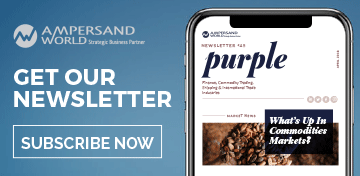The world of recruitment is going through a 'period of transition' and has reached a tipping point between the increasingly dated model of job websites crammed with traditional CVs and the emerging one brought about by a digital culture that fits in with candidates' new aspirations. Welcome to a world that is being reborn, where the focus is on not only creativity and affinity but also selection, responsiveness, efficiency and transparency.
To understand the factors at play in recruitment today and to work out its new methods in 2015, we need to take a brief look back, more specifically, to the world of recruitment in the 1990s – a time of headhunters, recruitment officers, newspaper ads and job websites. These good old methods for finding a job no longer fit in with the new realities of recruitment. The economic climate has changed and companies, spurred on by developments in technology, have had to change how they work, including in the field of recruitment. These days, it is easier to seek out problems that you can solve than to find work. For a candidate, opportunity lies in their ability to resolve a particular problem facing a manager, who is looking to recruit an individual with a specific profile. A wave of innovation is sweeping through the world of recruitment as it reinvents itself. How? By developing approaches that focus more on a candidate’s personality, aspirations and capacity to share a passion that fits in with a company’s line of business.
In a new world where employees resign by video to the lyrics of Kanye West (and where the employer responded by using the same media to recruit a new employee!), what lessons can we learn from new alternative recruitment methods?
A – AMAZING
The social media culture has simplified relations between potential employees (candidates) and companies (employers). The service offered by the website Lunchcruit (with the strapline ‘Who says there’s no free lunch?’), which connects ‘great people’ with ‘amazing companies’ over lunch, all for free, therefore seems a natural step. There’s zero commitment. No obligation. No pressure. What’s more, you get to eat lunch for free with an INCREDIBLE company.
What can we learn from this?
That these days applying for a job must be a simple, direct process. And that applying for a job or recruiting for a post has to be as ‘actionable’ as a ‘Get a lunch’ button.
L – LIGHT-HEARTED
‘We no longer need your resume. We want your best story’. This is the recruitment approach adopted by a Canadian company (a retail chain that sells outdoor equipment and hunting and fishing products), which asks candidates to tell their best story, whether it’s about an outdoor adventure, their job or a project that has shaped who they are. Such ‘personal branding’ and the resulting ‘storytelling’ have become commonplace and now apply to all candidates.
What can we learn from this?
Your image is not just about your online presence but also your I.R.L (‘In Real Life’ for the less geeky among you). Make the most of this opportunity to tell your story and talk about yourself in a different, more creative way. You finally have the chance to escape the straitjacket of the CV, so capture your future employer’s imagination by telling them your story! There are many different formats available online (including videos, interviews and infographics) that you can use to present your career in a more ‘catchy’ way.
T – TRANSPARENCY
In this age of social media, openness comes as standard. Among the emerging values of this new world and its digital culture, transparency stands out, particularly when it comes to the question of executive pay. A company’s remuneration model has a meaning for employees, who are no longer satisfied with just having an employment contract, but also want to understand and play their role within the organisation. What can we learn from this?
Cut the waffle. Today, companies want candidates who are like them and candidates are looking for companies that match their personality and aspirations. They want to know the meaning of what they do and why they do it.
They want to know the meaning of what they do and why they do it.
E – EFFICIENCY
Working in a company isn’t as popular as it once was and this is even truer of applying for jobs online. What’s more, responding to job ads can often be frustrating! The recruitment process lacks transparency, submitting applications is time-consuming and results in few if any responses and little information about the company is provided upfront, which sometimes leads to big disappointments once a candidate has been taken on… The Internet should have made looking for a job a more light-hearted business, but (all too) often this isn’t the case. The main job websites have been designed with employers in mind, to the detriment of the candidate experience.
Welcome to the Jungle is a platform designed for candidates that offers to match them with a company on the basis of their aspirations. They may be looking for an organisation that is growing fast or one that offers a high level of autonomy, international travel, high-quality training or even the opportunity to change roles on a regular basis. Urban Linker, a specialist recruitment consultancy firm for the digital sector, attracts candidates using humour with its parodies of the sector’s clichés (‘I like code’, ‘I’m business savvy’, ‘Marketing addict’).
What can we learn from this?
That every individual, every personality has a place within a company. That there is ‘a “tribe” for you’, ‘a job for you’ that takes account of your aspirations ‘while letting you be yourself’.
R – RESPONSIVENESS
In a world that is changing ever more quickly, candidates and recruiters need fast responses. For employers, this means optimising the recruitment process. For example, the video interview service offered by EasyRECrue offers real added value (in comparison with pre-screening by telephone). The insight offered by such videos and the way in which they are recorded enable employers not only to shortlist candidates more effectively but also to get the rest of the team involved. What’s more, they also halve the length of the recruitment process.
From a candidate’s point of view, these videos are an opportunity to share their reasons for applying and to describe their career and personality in more detail than is possible in a CV, from the comfort of their own home and without having to worry about taking time off work or travelling elsewhere.
What can we learn from this?
That the added value offered by new recruitment methods works both ways, resulting in a win-win situation.
N – NETWORK
Now more than ever, the ability to think in terms of networks and creativity is a real asset in an ultra-connected world. In this connected age in which we are living, companies and candidates alike must hone their social skills. Learning how to connect with others in an ever-changing world is becoming vital. When it comes to fulfilling specific leadership, management or project management roles or showcasing your skills, being able to build relations with yourself, with others and with a group is a big advantage.
What can we learn from this?
That nowadays we have to develop our ‘inner compass’ based on a deep understanding of our talents, skills and values to avoid ‘watering ourselves down’ or losing our sense of self.
A – AFFINITIVE
The Match.com of the recruitment world is here! Helping two people to meet is no longer the preserve of dating websites – we talk about ‘matching’ and compatibility ‘percentages’ in recruitment, too. The aim is to match a candidate and an employer on the basis of their aspirations and compatibility, by putting the candidate’s personality and their affinity with the company at the heart of the recruitment process. In the future, as platforms like Monkeytie (which match candidates with employers) and recruitment apps like Jobr and Ahead (‘Tinder’ for jobs) continue to emerge, recruiters will be transformed into behavioural analysts. Just like in the US series The Mentalist, they will be able to instantly identify the personality traits that are most compatible with a particular company’s culture or the specific needs of a post.
What can we learn from this?
That similarities between candidates and employers are now seen as a more important factor. This is not to say that skills are no longer taken into account, but rather that what takes precedence is the ability to identify skills that can be developed in the long-term.
T – TRANSVERSALITY
Faced with a world that is coming up against a huge diversity in skills, we can no longer spend our lives inside our own little box. The process of questioning the obsolescence of skills involves a transformation on the part of companies. The notion of hierarchy that weighs down organisations is gradually disappearing to give way to an approach that is less collective and more collaborative. Whereas according to a collective approach, 1+1=2, from a collaborative perspective, 1+1 must make 3.
What can we learn from this?
What matters now is the ability to collaborate with people at all levels of the company and to break free of a ‘silo structure’, at the same time as attending regular training and training your teams to minimise disruption.
I – INTRAPRENEURSHIP
Intrapreneurship means operating like an entrepreneur, but within a company! The creation of in-house incubators gives employees an opportunity to develop ideas and implement them within their company. The need for companies to move away from the old ‘silo mentality’ is steadily emerging, with the aim of creating an approach based on the notion of continuous learning.
What can we learn from this?
That each individual must ‘be an entrepreneur in their own life’ and that the time of the company deciding on everything and coming up with all the ideas is gone. The collective approach is dead. Long live collaboration!
F – FLUIDITY
Companies know that this digital culture is a window onto a new digital world – a lever of change. The fluidity of recruitment lies in companies’ agility. The company of the future must be agile in its procedures and will put in place flat, flexible structures to respond to candidates’ new needs.
What can we learn from this?
That a company that can implement ideas quickly, before they become outdated, will become the company of the future!
‘Candidates are changing at the same time as companies are undergoing a transformation.’ How about you? Have you already tested these new recruitment methods? What are your views on them?















